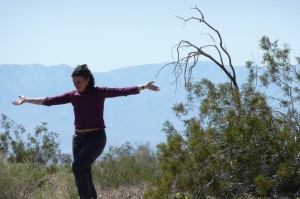 “And now let us welcome the new year, full of things that have never been.” -Rainer Maria Rilke
“And now let us welcome the new year, full of things that have never been.” -Rainer Maria Rilke
I love California native plants! I work with them often in gardens, and admire them from many vantage points. One important aspect of native plants is the long history they share with California’s native people, and the intricacies and depths of those relationships.
Consider the basket. California Indian basketry is known to be among the finest in the world. It is truly marvelous in its diversity, sophistication, and beauty. In Tending the Wild, M. Kat Anderson states that “a basket’s fineness of weave and perfection of design were not achieved by skill alone. Its beauty began with tending the native plants that were to become the basket. Whether it was iris in coastal prairies, bracken fern in red fir forest, sourberry in coastal scrub, deergrass in chaparral, or oak in blue oak woodlands, almost every type of sedge, wildflower, fern, bush, tree, or grass used in a basket was fussed over and meticulously groomed by weavers.”
To me, it also represents the good life that California has offered it’s people, with abundant resources and time to bring pleasure and beauty into daily life. “The basketry craft, all over California, was more than a mechanical exercise, and baskets were more than utilitarian objects. They were absolutely central in the worldviews, cultures, and everyday lives of native people in California.” (Anderson)
Years ago, I took a class to learn one form of California Indian basketry. Within hours of beginning the class, I understood that I would never be an expert basketweaver….
Historically, a significant amount of time in Californian Indian life was devoted to basketry. There were many kind of baskets important to daily living, and many people participated in the craft. The extensive processes of locating, cultivating, harvesting and preparing plant material took years to learn, in addition to mastering weaving techniques. People needed to be intimately acquainted with their environments and plants. Once well-versed in that practical knowledge, a highly skilled California Indian basket-maker could spend several hundred hours to make just one tightly-woven cooking basket, and one household might have several cooking baskets among many other essential kinds.
This morning I woke up with the thought “It’s January” and then thought of the basketry class offered in January at Coyote Hills Regional Parks. I’m considering taking the class. I know I will not become an expert. But contemplating the craft gives me a chance to reflect on quality of life: these baskets are elegant works of art, and the energy put into them clearly goes beyond function and requires creativity and aesthetic focus.
To me, the time spent on making baskets implies a lifestyle that allows for activities to be both useful and beautiful. It means appreciating abundant natural resources as part of daily life. It suggests the ability to sustain people’s basic needs while bringing joy and care and art into the process.
This year, I want to experience the generous offerings of my surroundings each day, move at a joyful pace, and do the things that are satisfying and meaningful to me. Poet Kahlil Gibran has said, “Work is love made visible.” As I continue with my work of learning about plants and the richness of our environment, this blog gives me an opportunity to share the journey with you.
Thank you for joining me and I wish you a Happy New Year!
